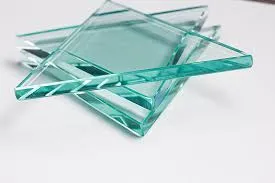The Price Dynamics of Reflective Glass An In-Depth Analysis
Reflective glass, often regarded as a quintessential element in modern architecture, not only enhances the aesthetic appeal of buildings but also contributes to energy efficiency. As the demand for sustainable building materials continues to rise, the price of reflective glass has become a subject of interest among architects, builders, and investors. Understanding the factors that influence the pricing of reflective glass is crucial for anyone involved in construction or design.
Definition and Types of Reflective Glass
Reflective glass is a type of glazing that features a thin coating of metallic or other materials on its surface. This coating reflects a significant portion of solar radiation, thereby reducing heat gain inside a building. The main types of reflective glass include low-emissivity (Low-E) glass, which reflects infrared light while allowing visible light to pass through, and sputtered coatings that offer various levels of reflection and tint.
Factors Influencing Reflective Glass Prices
1. Raw Material Costs The primary components of reflective glass, including silica, aluminum, and other additives, significantly influence its price. Fluctuations in these raw material costs, often driven by changes in mining activities and trade regulations, can lead to price volatility in the reflective glass market.
2. Manufacturing Processes The complexity of the manufacturing process also affects costs. Advanced techniques such as magnetron sputtering or chemical vapor deposition, which create high-quality reflective coatings, require specialized equipment and skilled labor, contributing to higher prices. As technology advances, manufacturers may invest in more efficient processes that could stabilize or reduce costs.
3. Thickness and Size Reflective glass comes in various thicknesses and sizes, and these specifications can impact pricing. Thicker glass tends to be more expensive due to increased material use and additional handling requirements. Custom sizes may also incur higher costs due to limited production runs.
reflective glass price
4. Market Demand The increasing focus on energy-efficient buildings has fueled demand for reflective glass, especially in commercial and high-rise buildings. This rise in demand can lead to price increases, particularly during peak construction periods or in regions with a construction boom.
5. Geographic Location Prices can vary significantly based on geographic location. Regions with high transportation costs or limited access to manufacturing facilities may see higher reflective glass prices. Additionally, local competition among suppliers can impact pricing strategies.
The Impact of Sustainability Trends
As sustainability gains prominence in the building industry, the demand for reflective glass is expected to grow. This rise may come from both residential and commercial sectors seeking to reduce energy costs and achieve environmentally friendly certifications, such as LEED (Leadership in Energy and Environmental Design). Manufacturers are increasingly focused on producing sustainable products, which could initially drive up costs due to investments in green technologies and processes.
Future Projections
Looking forward, the reflective glass market is anticipated to witness significant growth. As innovations lead to enhanced performance, such as better thermal insulation and improved visibility, prices may stabilize despite the rising costs of raw materials. Additionally, the expansion of the green building movement is likely to make reflective glass a more sought-after commodity, further influencing pricing dynamics.
Conclusion
In conclusion, the price of reflective glass is affected by a multitude of factors, including raw material costs, manufacturing processes, and market demand driven by sustainability trends. As the building industry evolves, understanding these dynamics will be crucial for stakeholders to make informed decisions regarding the use of reflective glass in their projects. By staying abreast of market trends and technological advancements, investors, architects, and builders can better navigate the complexities of reflective glass pricing, ensuring they contribute to sustainable and aesthetically pleasing structures.
 Afrikaans
Afrikaans  Albanian
Albanian  Amharic
Amharic  Arabic
Arabic  Armenian
Armenian  Azerbaijani
Azerbaijani  Basque
Basque  Belarusian
Belarusian  Bengali
Bengali  Bosnian
Bosnian  Bulgarian
Bulgarian  Catalan
Catalan  Cebuano
Cebuano  Corsican
Corsican  Croatian
Croatian  Czech
Czech  Danish
Danish  Dutch
Dutch  English
English  Esperanto
Esperanto  Estonian
Estonian  Finnish
Finnish  French
French  Frisian
Frisian  Galician
Galician  Georgian
Georgian  German
German  Greek
Greek  Gujarati
Gujarati  Haitian Creole
Haitian Creole  hausa
hausa  hawaiian
hawaiian  Hebrew
Hebrew  Hindi
Hindi  Miao
Miao  Hungarian
Hungarian  Icelandic
Icelandic  igbo
igbo  Indonesian
Indonesian  irish
irish  Italian
Italian  Japanese
Japanese  Javanese
Javanese  Kannada
Kannada  kazakh
kazakh  Khmer
Khmer  Rwandese
Rwandese  Korean
Korean  Kurdish
Kurdish  Kyrgyz
Kyrgyz  Lao
Lao  Latin
Latin  Latvian
Latvian  Lithuanian
Lithuanian  Luxembourgish
Luxembourgish  Macedonian
Macedonian  Malgashi
Malgashi  Malay
Malay  Malayalam
Malayalam  Maltese
Maltese  Maori
Maori  Marathi
Marathi  Mongolian
Mongolian  Myanmar
Myanmar  Nepali
Nepali  Norwegian
Norwegian  Norwegian
Norwegian  Occitan
Occitan  Pashto
Pashto  Persian
Persian  Polish
Polish  Portuguese
Portuguese  Punjabi
Punjabi  Romanian
Romanian  Russian
Russian  Samoan
Samoan  Scottish Gaelic
Scottish Gaelic  Serbian
Serbian  Sesotho
Sesotho  Shona
Shona  Sindhi
Sindhi  Sinhala
Sinhala  Slovak
Slovak  Slovenian
Slovenian  Somali
Somali  Spanish
Spanish  Sundanese
Sundanese  Swahili
Swahili  Swedish
Swedish  Tagalog
Tagalog  Tajik
Tajik  Tamil
Tamil  Tatar
Tatar  Telugu
Telugu  Thai
Thai  Turkish
Turkish  Turkmen
Turkmen  Ukrainian
Ukrainian  Urdu
Urdu  Uighur
Uighur  Uzbek
Uzbek  Vietnamese
Vietnamese  Welsh
Welsh  Bantu
Bantu  Yiddish
Yiddish  Yoruba
Yoruba  Zulu
Zulu 

